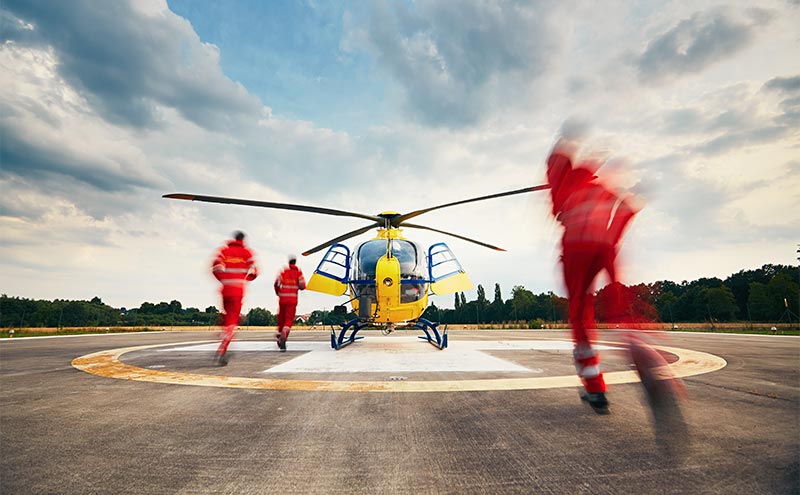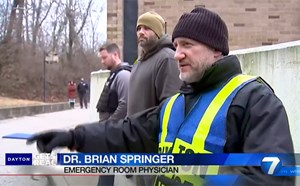
Journal Watch
Lt. Ryan Leone, introduction by Jeremy Ackerman
In this first ACEP TEMS section journal watch, written by Lt. Ryan Leone, a medical student at Columbia University, we summarize and comment on 6 articles relevant to tactical and law enforcement medicine. Please send articles that you find which you think are important to the work we do.
The first two appeared in Annals of Emergency Medicine and studied the impact of real-world environmental conditions on medications stored in emergency vehicles. While the authors studied EMS vehicles specifically, these studies should be of great interest to those of us working with law enforcement and tactical teams where medications can anticipate to be used less frequently potentially exposing them to much longer storage than medications stored in conventional EMS vehicles. The third article appeared in Resuscitation and strikingly demonstrates the impact of police and fire-initiated CPR in cardiac arrest. The fourth article appears in the Polish journal Emergency Medical Service and examines demographic factors impacting effective CPR in police officers. The final article was found in the Nordic Journal of Studies in Policing, is a study of experts as to what emergency medical training and expertise is needed by officers. These last two studies are a reminder that the role of police officers and medical first responders is more universal than just here in the US and that we may be able to learn from our colleagues around the world.
Impact of Ambient Temperature on 5 Emergency Drugs Aboard an Emergency Medical Car Over a 1-Year Period. Annals of Emergency Medicine, 2022
Given the wide variation in temperatures within emergency medical services (EMS) vehicles, the authors sought to evaluate how 5 drugs (amiodarone, rocuronium, fentanyl, succinylcholine, and epinephrine) fared on a National Fire and Rescue Corps of Luxembourg EMS vehicle in comparison to the same quantity of drugs at room temperature or in a pharmacy refrigerator. They measured active drug concentrations of vials from the same batch in each of the three conditions every three months for one year using high-pressure liquid chromatography and ultraviolet detection.
After one year at temperatures from 13.9-33.9 degrees Celsius (median: 22.9 degrees Celsius) on the EMS vehicle as it ran ~1,900 emergencies and remained in the fire station garage when unused, succinylcholine kept 89% of its active concentration, while the other drugs retained 96.3-103%, which is above the 90% minimum acceptable potency threshold. Despite the lower preservation of succinylcholine, all concentrations were within the manufacturer specification intervals, indicating that storage on EMS vehicles is comparably safe to storage at ambient temperature (15-25 degrees Celsius) or in pharmacy refrigerators (2-8 degrees Celsius).
These findings are reassuring for tactical and law enforcement medical providers, who may find themselves using medications that have similarly been stored on vehicles for long stretches of time. While the results may be hard to generalize across all manufacturers and may differ in extreme climate environments or with direct exposure to sunlight, they affirm that numerous emergency medications can maintain their potency in real-life scenarios on EMS vehicles. It may also diminish the tendency for drugs to be exchanged prior to their expiration dates.
Stability of Drugs Stored in Helicopters for Use by Emergency Medical Services: A Prospective Observational Study. Annals of Emergency Medicine, 2022
Temperature variations on helicopter emergency medical services (HEMS) are of great concern as well, so these authors conducted a prospective observational study on 2 Swiss rescue helicopters over 12 months. They evaluated nine drugs (epinephrine, norepinephrine, amiodarone, midazolam, fentanyl, naloxone, rocuronium, etomidate, and ketamine), measuring temperature at 10-minute intervals within the medication storage bags and in the cabin, and measuring stability with high-performance liquid chromatography.
After one year at temperatures from -1.2 - 38 degrees Celsius (mean: 17.1 degrees Celsius) in the storage bags and -4.7 - 38.1 degrees Celsius in the cabins, all drugs-maintained concentrations at 90% of the label claim, despite exposure to temperatures from 30-101 degrees Fahrenheit, though rocuronium and etomidate had only seven-month observation periods due to supply shortages.
Like the last study, these findings are reassuring for tactical and law enforcement medical providers who might utilize medications that were stored on helicopters for extended periods of time across varied environments. Similar generalizability concerns should be considered across manufacturers and even in different climates, but the overall takeaway is positive and reiterates the potential for drugs to be retained until their expiration date, saving costs, and preventing waste.
The association of fire or police first responder-initiated interventions with out of hospital cardiac arrest survival. Resuscitation, 2022
With police and fire personnel often arriving to scene before medical personnel, they are uniquely positioned to utilize life-saving interventions like CPR and AEDs. The authors used data from 2014-2019 in the MI-CARES registry to evaluate the rates of CPR and AED initiation by police and fire first-responders, along with their impact on outcomes (return of spontaneous circulation (ROSC) upon ED arrival, survival to discharge, and good neurological outcome) for out-of-hospital cardiac arrest (OHCA).
The results of their multi-level modeling showed that fire or police first responders started CPR in 31.8%, and AED use in 6.1%, of the 25,067 OHCA incidents. While ROSC outcomes after police/fire initiated-CPR showed no significant difference from EMS-initiated CPR, the odds of survival to hospital discharge (adjusted odds ratio of 1.25) and good neurological outcome were significantly higher (adjusted odds ratio of 1.40).
While some limitations existed, such as lacking data on time-related variables, the study emphasizes the importance of training non-medical providers in basic life support. Tactical medical providers may be closer to the x than traditional EMS personnel are to unanticipated emergencies, but there is value in the seconds to minutes of additional CPR that a well-trained officer may be able to provide.
Influence of selected socio-demographic factors on the cardiopulmonary resuscitation effectiveness performed by the police officers during the service. Emergency Medical Service, 2022
Police officers come from a diverse array of demographic and socioeconomic backgrounds, so the authors of this study sought to evaluate how those factors impacted CPR effectiveness in 90 Polish police officers (45 men and 45 women) using technology-enabled mannequins. The factors reviewed were.
Results suggested no variations in ventilation, but found that women performed better on chest relaxation, older officers (37-56 years old) performed more compressions at sufficient depth, experienced officers (10-28 years of service) performed deeper chest compressions, and junior officers (1-9 years of service) complied more with the 30:2 compression to breath ratio suggested by the European Resuscitation Council.
Despite limitations on generalizability due to potential differences between Polish law enforcement training programs and those of other nations, these findings emphasize the importance of practicing on mannequins that offer proper depth and frequency feedback. They also raise the question of whether socio-demographic performance differences may also exist amongst American officers. If such differences were found, it could inform the way that re-education on basic life support is provided to junior and senior officers.
The Emergency Care Competence Needed for Police Patrol Officers According to the Experts: –a National Swedish Delphi Study. Nordic Journal of Studies in Policing, 2022
This paper covers the findings of a Delphi method study with 43 experts on emergency care competencies for police patrol officers in Sweden. The study collected insight from these experts in four rounds, starting with email responses to the question “What does a Swedish Police patrol officer need to know in order to help acutely ill or injured persons?” to identify 76 areas of emergency care competence. This was followed by conversion of those areas into a Likert scale questionnaire in Round 2 that resulted in 36 areas with >75% consensus, a second questionnaire in Round 3 with 40 non-consensus questions from Round 2 and 9 additional ones that resulted in 13 more >75% consensus items, and a Round 4 questionnaire on 36 areas that did not reach consensus, resulting in 2 final >75% consensus items. Responsiveness was 100% through all four rounds and feedback was offered between each questionnaire regarding the prior means to impact their agreement.
Basic life support measures received the highest agreement, with near-100% agreement on performing CPR with an AED, stopping massive hemorrhage, airway management, and working in a hazardous environment. Providing trauma care and following systematic protocols like “S-CABCDE” were also highly agreed upon. Less agreement was seen in issues like mental health and substance use, which the authors noted as surprising given the noted increase in prevalence for such issues and their interface with law enforcement. Other topics were seen as unnecessary for officers, such as identifying the causes of burns or preventing them and identifying specific diseases.
While expert selection bias may have played a role in these conclusions, the piece adds a European and Swedish perspective to the literature and forms a foundation of emergency care competencies that may have relevance to training programs outside of Sweden. Though the type of emergencies encountered may vary internationally, it is clear that those which gained the greatest consensus - managing hemorrhage, cardiac arrest, and airway issues - are relevant to the pressing needs in the pre-hospital environment which tactical medical providers may address.
- Welter, C., Roschel, K., Schneider, S., Marson, C., & Stammet, P. (2022). Impact of Ambient Temperature on 5 Emergency Drugs Aboard an Emergency Medical Car Over a 1-Year Period. Annals of Emergency Medicine, 80(4), 358-363.
- Pietsch, U., Moeckel, J., Koppenberg, J., Josi, D., Jungwirth, A., Hautz, W. E., ... & Albrecht, R. (2022). Stability of Drugs Stored in Helicopters for Use by Emergency Medical Services: A Prospective Observational Study. Annals of Emergency Medicine, 80(4), 364-370.
- Salhi, R. A., Hammond, S., Lehrich, J. L., O'leary, M., Kamdar, N., Brent, C., ... & CARES Surveillance Group. (2022). The association of fire or police first responder initiated interventions with out of hospital cardiac arrest survival. Resuscitation, 174, 9-15.
- Iwanicka, E., Więch, P., Magoń, M., Guty, E., Kucaba, G., & Muster, M. (2022). Influence of selected socio-demographic factors on the cardiopulmonary resuscitation effectiveness performed by the police officers during the service. Emergency Medical Service, 9(1), 31-36.
- Wallin, K., Holmberg, M., Andersson, H., Kronkvist, O., & Svensson, A. (2022). The Emergency Care Competence Needed for Police Patrol Officers According to the Experts: –a National Swedish Delphi Study. Nordic Journal of Studies in Policing, (1), 1-15.



